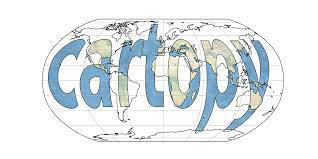Introduction
Geospatial analysis, the process of examining and interpreting data within a geographic or spatial context, is a crucial component of various fields, from urban planning and environmental science to logistics and disaster management. From data access and manipulation to advanced machine learning techniques and seamless integration with Geographic Information System (GIS) software, Python is the go-to language for geospatial analysts and data scientists. This article provides an informative overview of how Python transforms geospatial analysis and the extensive libraries available to streamline and enhance this critical field.
Role of Python in Geospatial Analysis
Python plays a significant role in geospatial analysis due to its versatility, rich ecosystem of libraries, and ease of use. Here are some critical aspects of Python’s role in geospatial analysis:
- Data Access and Manipulation: Python provides libraries like GDAL, Fiona, and Rasterio for reading, writing, and manipulating geospatial data in different formats, including shapefiles, GeoTIFFs, and more. These libraries enable users to access and work with geospatial datasets seamlessly.
- Data Visualization: Python libraries such as Matplotlib, Seaborn, and Plotly are widely used for creating interactive and informative geospatial visualizations. These tools allow for creating maps, charts, and graphs to represent geographic data effectively.
- Geospatial Analysis Libraries: Python offers specialized geospatial analysis libraries like GeoPandas, Shapely, and Pyproj that facilitate operations on geometric objects, spatial relationships, and coordinate transformations. These libraries simplify the process of conducting complex spatial analyses.
- Web Mapping: Python libraries like Folium and Bokeh allow developers to create interactive web maps and applications. These tools can integrate with web mapping services like Leaflet and OpenLayers, making it easier to visualize and share geospatial data online.
- Machine Learning and ai: Python’s extensive machine learning libraries, such as scikit-learn and TensorFlow, enable geospatial analysts to apply machine learning techniques to remote sensing data, land use classification, and other geospatial tasks. This is valuable for predictive modeling and pattern recognition.
- Geospatial Data Science: Python is the preferred language for data scientists working with geospatial data. It supports data preprocessing, feature engineering, and model building, making it an ideal choice for solving real-world geospatial problems.
- Integration with GIS Software: Python can seamlessly integrate with popular GIS software like ArcGIS, QGIS, and GRASS GIS. This enables users to extend the functionality of these tools, automate repetitive tasks, and customize workflows.
Also Read: A Beginner’s Guide to Geospatial Data Analysis
50+ Geospatial Python Libraries
Arcpy
Arcpy is a Python library developed by Esri for automating and customizing tasks within ArcGIS, a popular geospatial software. It provides access to ArcGIS functionality, allowing users to script and extend its capabilities. Arcpy offers tools for geoprocessing, map automation, and spatial analysis. Users can create and manage geospatial data, perform spatial queries, and automate complex GIS workflows. It’s a valuable resource for ArcGIS users and GIS professionals.
Basemap
Basemap, though deprecated in favor of Cartopy, was a Python library for creating static, interactive, and animated maps. It enabled the visualization of geospatial data on various map projections. Basemap allowed users to plot data on different map projections, add geographic features, and customize map layouts. While it’s no longer actively maintained, it was once a widely used tool for geospatial visualization.
Cartopy

Cartopy is a Python library for geospatial data visualization. It’s a more modern and actively maintained alternative to Basemap, offering various map projections and customization options. Cartopy supports the creation of maps, data visualization, and integration with multiple map data sources. It’s used for scientific and environmental data visualization, making it suitable for various applications.
EarthPy
EarthPy is a Python package designed for geospatial data analysis in the context of environmental science. It focuses on working with satellite and aerial imagery. EarthPy provides tools for processing, analyzing, and visualizing geospatial data. It’s beneficial for land cover analysis, time series data, and the manipulation of raster data.
Fiona-GO
Fiona-GO is a lightweight wrapper around the Fiona library, simplifying access to geospatial data. It enhances the convenience of working with vector data formats, such as Shapefiles, in Python. Fiona-GO simplifies tasks like reading, writing, and manipulating vector geospatial data. It streamlines working with formats like Shapefile, making it easier for Python developers.
Folium

Folium is a Python library for creating interactive maps. It allows users to embed Leaflet maps into web applications and customize them with various data overlays. Folium is user-friendly and suitable for web developers. It simplifies map creation, adding markers, popups, and other interactive features. It’s a versatile tool for data visualization and location-based applications.
Learn More: Geospatial Analysis | Getting Started With Folium In Python!
GDAL and OGR
GDAL (Geospatial Data Abstraction Library) and OGR (Simple Feature Library) are powerful tools for geospatial data processing. Geospatial Data Abstraction Library or GDAR handles raster data, while OGR is responsible for vector data. GDAL/OGR provides extensive capabilities for data conversion, analysis, and manipulation. Users can read and write various geospatial data formats, perform geoprocessing tasks, and manage data efficiently.
GEE-Py
GEE-Py is a Python package for interacting with Google Earth Engine (GEE). GEE is a platform for analyzing and visualizing geospatial data on a global scale. GEE-Py allows users to access and analyze Earth Engine data using Python. It simplifies tasks like data retrieval, processing, and visualization. It’s an essential tool for leveraging GEE’s capabilities.
GeoAlchemy
GeoAlchemy is a library that integrates geospatial functionality into SQLAlchemy, a popular Python library for database interaction. It enables the storage and querying of geospatial data within relational databases. It supports spatial data types and provides a seamless way to work with geospatial data in a database context.
Geocoder
Geocoder is a Python library for geocoding, converting addresses or place names into geographic coordinates and vice versa. It offers a straightforward and consistent interface for geocoding tasks. It supports various geocoding services, making it easy to work with location-based data and applications.
Geodaisy
Geodaisy is a toolset that provides functionalities for geospatial data analysis and visualization. It simplifies working with spatial data, making it accessible to a broader audience. Geodaisy offers tools for data processing, mapping, and geospatial analytics. It supports various data formats and enables users to create custom geospatial applications and visualizations.
GeoDjango
GeoDjango is an extension of Django, a popular web framework for Python, designed to handle geospatial data. It empowers developers to build web applications with geospatial features. GeoDjango integrates geospatial data types, spatial queries, and mapping capabilities into web applications. It simplifies the development of location-based services and geospatial web applications.
Geopandas-Tools
Geopandas-Tools likely refers to additional tools or extensions for the Geopandas library. In Python, Geopandas is itself used for geospatial data manipulation. While we don’t specify the specific tools, extensions for Geopandas could enhance its functionality for data processing, analysis, and visualization in geospatial applications.
Geoplot
Geoplot is a Python library that provides a high-level interface for creating various map types. It simplifies the process of visualizing geospatial data. Geoplot offers an easy way to create choropleth maps, scatter plots on maps, and other geospatial visualizations. It’s suitable for data exploration and presentation in geospatial analysis.
Geopy

Geopy is a Python library for geocoding, converting addresses or place names into geographic coordinates and vice versa. It supports various geocoding services, making it a versatile tool for location-based data applications. It simplifies the task of working with geospatial coordinates and addresses.
Geopyspark
Geopyspark is a Python library designed for distributed geospatial analytics. It leverages PySpark, a powerful tool for large-scale data processing. Geopyspark enables geospatial data analysis on distributed systems, making it suitable for handling big geospatial datasets. It supports operations like raster data processing and spatial analytics at scale.
GeospatialPDF
GeospatialPDF is a tool that empowers users to embed geospatial data within PDF documents. It’s a valuable solution for integrating spatial information into reports, maps, and presentations. GeospatialPDF simplifies the process of adding spatial context to PDF files. It allows users to include maps, geographic coordinates, and other location-based data within PDFs, enhancing the visual representation of information.
GeostatsPy
GeostatsPy is a Python library that specializes in geostatistical analysis for spatial data. It’s designed to handle the statistical aspects of geospatial datasets. GeostatsPy offers a range of geostatistical tools, including variogram modeling, kriging, and spatial interpolation. It is a valuable resource for geospatial analysts looking to perform advanced statistical analysis on their spatial data.
GPSBabel
GPSBabel is a versatile program for converting and transferring GPS data. It facilitates the interoperability of various GPS file formats and simplifies data exchange. GPSBabel supports a wide range of GPS data formats and allows users to convert data between formats, making it easier to work with GPS data from different sources. It’s a helpful tool for GPS enthusiasts and professionals.
H3-Py
H3-Py is a Python binding for the H3 geospatial indexing system. H3 is a popular spatial indexing system developed by Uber, and H3-Py provides Python access to its functionality. H3-Py enables users to perform geospatial indexing, hexagonal binning, and spatial analysis using the H3 system. It’s handy for applications involving location-based data and spatial aggregation.
ipyleaflet
ipyleaflet is a Python library for interactive, browser-based mapping. It’s designed to create interactive and visually appealing maps in Jupyter notebooks. It offers a range of mapping tools and widgets for Jupyter environments. Users can create interactive maps, add markers, and visualize geospatial data, making it an excellent choice for data exploration and presentation.
Kepler.gl
Kepler.gl is an open-source geospatial analysis tool tailored for large-scale datasets. It’s designed to simplify visualizing and analyzing complex geospatial information. Kepler.gl provides a user-friendly interface for building customizable maps and analyzing geospatial data. It can handle large datasets and offers features for data filtering, styling, and sharing, making it a valuable resource for geospatial professionals.
Leaflet

Leaflet is a popular open-source JavaScript library for creating interactive maps on web applications. It’s a versatile tool for adding mapping functionality to websites. Leaflet offers a user-friendly API for building interactive, mobile-friendly maps. It supports various map layers, markers, and popups, making it ideal for web developers seeking to integrate maps into their projects.
Lingeohash
Libgeohash is a library that provides functions for encoding and decoding geohashes. Geohashes are a way to represent geographic coordinates as a short string of letters and digits. Libgeohash simplifies the process of converting between latitude and longitude coordinates and geohashes. It’s a valuable tool for geospatial applications where compact and human-readable representations of locations are needed.
Matplotlib
Matplotlib, a widely used Python library, creates static, animated, and interactive visualizations, including geospatial visualizations. It provides various plotting functions to develop geospatial visualizations, such as scatter plots, line plots, and heat maps. It serves as a versatile tool for data visualization and is a common choice in combination with other geospatial libraries to craft custom maps and graphics.
Mayavi
Mayavi is a scientific data visualization tool for 3D visualizations. It is widely used in scientific computing, engineering, and data analysis to create interactive 3D visualizations and plots. Mayavi provides various visualization techniques, including volume rendering, contour plots, and surface plotting. It supports multiple data formats and integrates with popular scientific libraries like NumPy.
MetPy
MetPy is a Python library designed for meteorological and atmospheric data analysis. It offers tools and functionalities specifically tailored for weather and climate science. MetPy includes meteorological calculations, unit handling, and visualization tools. It simplifies the analysis and visualization of atmospheric data, making it a valuable resource for meteorologists and climatologists.
NetworkX

NetworkX is a Python library for the study and analysis of complex networks and graphs. It is widely used for network analysis, including social networks, biological networks, and transportation networks. NetworkX provides a wide range of graph algorithms and data structures for network analysis. It allows users to create, manipulate, and analyze graphs, making it a powerful tool for network researchers.
OGR
OGR is a set of Python bindings for the OGR library, which is used for vector data processing. It enables Python programmers to work with various vector data formats, such as shapefiles and geodatabases. OGR simplifies the reading, writing, and transformation of vector geospatial data. It is a valuable tool for geospatial professionals and developers working with vector data formats.
OpenRouteService-Py
OpenRouteService-Py is a Python client for the OpenRouteService API. It provides access to routing and geospatial services, allowing users to calculate routes isochrones and perform other geospatial tasks. OpenRouteService-Py enables developers to integrate geospatial routing and accessibility analysis into their applications. It offers various routing profiles and geospatial functionalities, making it a valuable resource for location-based services.
Orfeo Toolbox
Orfeo Toolbox (OTB) is a collection of tools for remote sensing image processing. It is designed to process and analyze remote sensing data, making it a critical component in Earth observation. OTB provides various image processing functions, including filtering, feature extraction, and classification. It is an open-source resource for remote sensing professionals and researchers.
OSMNX
OSMNX is a Python library that extracts, analyzes, and visualizes street networks from OpenStreetMap data. It is used for urban planning, transportation analysis, and geographical studies. OSMNX simplifies working with OpenStreetMap data, allowing users to extract street networks and perform network analysis. It provides tools for routing, visualization, and spatial analysis of urban networks.
Pandas

Pandas is a widespread data manipulation and analysis library in Python. While not exclusively a geospatial tool, it is widely used for processing and analyzing tabular and structured data, including geospatial data. Pandas offers data structures and functions for data cleaning, transformation, and analysis. It is a versatile library for handling and preparing geospatial datasets for analysis.
Plotly and Plotly Express
Plotly and Plotly Express are Python libraries for interactive data visualization. They can create various charts and graphs, including geospatial visualizations. Plotly and Plotly Express provide high-quality, interactive plotting capabilities. They allow users to develop geospatial visualizations, such as maps, scatter plots, and heat maps, with ease.
Plotnine
Plotnine is a Python library that brings the concept of a grammar of graphics to geospatial data visualization. It allows users to create custom and complex geospatial visualizations with a structured and consistent approach. Plotnine offers a powerful and flexible framework for creating geospatial visualizations. It enables users to define the aesthetics and components of their visualizations, making it a valuable resource for advanced geospatial data visualization.
PostGIS
PostGIS is an open-source extension for PostgreSQL that adds support for geographic objects and geospatial functions. It enables the storage, retrieval, and analysis of geospatial data within a relational database. PostGIS provides advanced geospatial capabilities, including support for various spatial data types, spatial indexing, and a wide range of geospatial functions. It is a powerful tool for managing and querying geospatial data.
PyCRS
PyCRS is a Python library for working with Coordinate Reference Systems (CRS). It allows users to parse, transform, and manage geospatial coordinate systems. PyCRS simplifies working with CRS definitions and conversions. It supports various CRS formats, making it a valuable resource for geospatial projects that involve different coordinate systems.
PyDeck
PyDeck is a high-level Python library for creating deck.gl maps. Deck.gl is a robust framework for data visualization on maps, and PyDeck simplifies its usage. PyDeck provides an intuitive interface for creating interactive and visually appealing maps with deck.gl. It supports various map layers and visualizations, making it suitable for geospatial data exploration and presentation.
PyGeos
PyGeos is a Python library designed to perform efficient geometric operations using the GEOS library (Geometry Engine – Open Source). It finds application in advanced geospatial calculations. PyGeos offers high-performance geometric operations, such as buffering, intersections, and overlays. It is optimized for speed and memory efficiency, making it a valuable tool for geospatial analysis.
PyNGL
PyNGL is a Python interface to the National Center for Atmospheric Research (NCAR) Graphics. It is primarily used for creating scientific visualizations, including geospatial and meteorological plots. PyNGL provides various plotting functions and options for creating geospatial visualizations. It is a versatile tool for atmospheric and geospatial data visualization.
PyProj
PyProj is a Python interface to the PROJ library, which is used for cartographic projections and coordinate transformations. It allows users to work with different coordinate systems. PyProj simplifies coordinate transformations and projections. It supports various CRS definitions and conversion options, making it essential for geospatial projects involving diverse coordinate systems.
PyShp

PyShp is a Python library for reading and writing shapefiles, a standard geospatial data format. It enables users to interact with shapefile data. PyShp provides tools for parsing and creating shapefiles. It is a valuable resource for working with vector geospatial data and integrating it into various applications.
PyViz and HoloViz
PyViz and HoloViz are libraries that include Geoviews, Datashader, and HvPlot. They are designed for interactive geospatial data visualization and exploration. These libraries offer various tools for creating interactive geospatial visualizations, handling large datasets, and providing a seamless user experience. They are suitable for data exploration and presentation.
Rasterio
Rasterio is a Python library for reading and writing geospatial raster data. It simplifies working with various raster formats, including GeoTIFF and more. Rasterio provides an easy-to-use interface for opening, reading, and writing raster datasets. It supports georeferencing and metadata handling, making it a valuable resource for working with geospatial imagery.
RSGISLib
RSGISLib is a library for remote sensing and geospatial image analysis. It is designed for processing and analyzing remote sensing data. RSGISLib offers various image processing functions, including classification, feature extraction, and image enhancement. It is a powerful tool for remote sensing professionals and researchers.
SentinelHub-Py
SentinelHub-Py is a Python library designed for working with satellite imagery from the Sentinel series of Earth observation satellites. It offers powerful tools for accessing, processing, and analyzing satellite data, making it a valuable resource for remote sensing applications. Key features include access to Sentinel Hub services, custom band combinations, and creating time series analysis for environmental monitoring.
Shapely
Shapely is a Python library for geometric operations and manipulations. It facilitates the creation and analysis of geometric shapes, such as points, lines, and polygons. Many GIS (Geographic Information Systems) applications widely use Shapely for spatial data processing and integration. Key features include spatial predicates, geometric operations, and the ability to check for geometric relationships.
SpatialPandas
SpatialPandas extends the functionality of the Pandas library to handle geospatial data efficiently. It provides data structures and operations for working with geospatial data like points, lines, and polygons. Key features include spatial indexing, geographic transformations, and seamless integration with existing Pandas workflows, making it easier to manage and analyze large geospatial datasets.
Turfpy
Turfpy is a Python port of Turf.js, a geospatial engine that offers a wide range of geospatial analysis functions. It enables users to perform geospatial calculations, such as distance measurement, intersection detection, and buffer operations, in Python. Turfpy is a valuable resource for geospatial professionals and developers who require powerful geospatial processing capabilities in their applications.
Whitebox Tools
WhiteboxTools is an open-source geospatial library that provides a rich set of geospatial tools for geoprocessing and spatial analysis. It supports various raster and vector data formats and offers multiple operations, including hydrological analysis, terrain analysis, and image processing. Key features include a command-line interface, Python bindings, and the ability to create custom geospatial workflows, making it a versatile choice for geospatial data manipulation and analysis.
Conclusion
In conclusion, Python has emerged as an indispensable tool in geospatial analysis. The versatility, extensive library ecosystem, and user-friendly nature of this technology have revolutionized the way people access, process, and visualize geospatial data. Python facilitates seamless data manipulation with libraries like GDAL, Fiona, and Rasterio, allowing users to work with various geospatial formats effortlessly. It empowers geospatial analysts to create interactive and informative visualizations using libraries such as Matplotlib, Seaborn, and Folium, while specialized tools like GeoPandas and Shapely simplify complex spatial operations.
In essence, Python has transformed geospatial analysis by providing a comprehensive, user-friendly, and powerful platform that empowers analysts and data scientists to harness the full potential of geographic data, ultimately contributing to better decision-making in various fields, from urban planning to environmental science and disaster management.
 NEWSLETTER
NEWSLETTER





